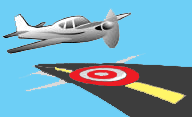 |
||||||
|
|
Number
292
|
January 2004
|
||||
|
P.O. Box 189, Moffett Field, CA 94035-0189 |
||||||
|
|
||||||
 |
||||||
|
|
Number
292
|
January 2004
|
||||
|
P.O. Box 189, Moffett Field, CA 94035-0189 |
||||||
|
|
||||||
![]()
 An
FAA review of National Transportation Safety Board (NTSB) accident data
revealed that during the period 1983 to 1993, approximately 279 aircraft
accidents occurred in which a checklist was improperly used or not used.
An
FAA review of National Transportation Safety Board (NTSB) accident data
revealed that during the period 1983 to 1993, approximately 279 aircraft
accidents occurred in which a checklist was improperly used or not used.
A review of ASRS "checklist" related reports for 2003 suggests that many of the same errors identified by the FAA and NTSB continue to be reported. The most common checklist errors include the following:
1. Failure to use a checklist.
2. Use of the wrong checklist.
3. Checklist flow interrupted.
4. Checklist item(s) overlooked.
Recent examples of these errors are detailed in the following ASRS reports:
No Checklist
In a recent report to ASRS, a C172 pilot shared this valuable lesson: When you're in a hurry and too rushed to use a checklist — that's the time to use a checklist.
Everything felt okay until just after touchdown. I veered to the right...and I was unable to correct. I continued off the runway, and skidded into the dirt.... After coming to a stop, I brought the plane back onto the runway. I decidedjust to takeoff and get out of there as quickly as possible.... I did not look at my checklist as I always do. At takeoff speed I began to rotate but the plane did not seem to respond. My attention diverted and I again drifted to the right. Nearing the end of the runway, I hit the brakes hard and skidded to the left off the runway and down an embankment...
Instead of taking a breath and following normal procedure after the near crash landing, I was worried what others would think and I tried to depart the area as quickly as possible. Upon inspection of the plane the trim was found to be in an extreme nose low position.... Had I stopped and used my checklist I would have taken off normally and not made a bad situation worse....
Wrong Checklist
By using the appropriate checklist, a crew can diminish or eliminate the adverse effects of a system malfunction. But, as this B767 crew learned, the wrong checklist can lead to inappropriate action.
It should be noted that training took over and we handled the checklist with absolute professionalism, except the part about doing the wrong checklist. It won't happen again.
Interupted Checklist
Use of a checklist insures that standard procedures are followed and all systems are properly set even when distractions interrupt the normal sequence of events, This B737 crew thought they were all set for takeoff until the "unfinished checklist" warning horn sounded.
An aircraft swap put us behind schedule, then a particularly ugly customer service problem...delayed boarding another 15 minutes.... After pushback and during the course of doing the after start checklist, the Master Caution "DOORS" light would not illuminate. [We] attempted [several procedures] to get the light to illuminate. Now we've gone from mildly irritated to irritated. We then consulted the MEL [Minimum Equipment List] for possible dispatch issues. About this time, the problem decided to cure itself. After being off on the Master Caution tangent for several minutes, the fact that we were not finished with the pre-takeoff checklist did not register. I called for taxi, and everything in our world seemed okay until the takeoff configuration horn sounded as I advanced the thrust levers for takeoff.... I returned the thrust levers to idle and the Captain called for taxi off of the runway. We realized that we had allowed the distraction after pushback to cause us to miss the completion of the pre-takeoff checklist and the flaps were not extended.... Now I am going to clip the checklist to the yoke until the pre-takeoff checklist is complete. If the checklist is still out of its holder during taxi, I should be asking myself why....
Overlooked Checklist Item
Completing every item on the checklist is the key to "unlocking" the secret of flight.
![]()
 A
review of the ASRS database indicates that approximately 100 gear up
landing incidents have been reported each year for the past five years.
Ninety-six unintentional gear up landings were reported in 2003.
A
review of the ASRS database indicates that approximately 100 gear up
landing incidents have been reported each year for the past five years.
Ninety-six unintentional gear up landings were reported in 2003.
Two factors, distraction and preoccupation, are common to most of the gear up incidents reported to ASRS. In the usual scenario, a distraction occurs at the time when the gear would normally be lowered and the pilot then becomes preoccupied with the approach and landing.
The last six unintentional gear up landing reports from 2003 confirm the need to overcome distractions and preoccupation during the landing phase. These incidents (all remarkably similar to the 90 reports that preceded them) involve light aircraft. The lessons, however, are valid for any aircraft with retractable gear.
An Extension Course in Six Lessons
1. Traffic is often cited as a distraction in gear up landings.
2. Distractions can also be self-induced.
3. A thorough passenger briefing might have prevented this distracting situation.
 4.
Although an "accuracy" landing does entail hitting a specific
point on the runway, taxiing beyond that point is easier when the gear
are extended.
4.
Although an "accuracy" landing does entail hitting a specific
point on the runway, taxiing beyond that point is easier when the gear
are extended.
The landing was intended to be a short approach, power off, accuracy landing.... As we went from number three to "Cleared to land number one" on short approach, I...now concentrated on an aiming point to make an accurate landing, using flaps as necessary, and flying the airplane.... I did not hear, or it did not register with me, that the gear warning horn was sounding. I did hear it after the gear up landing....
5. Lowering the landing gear should always be considered a two-part process. In this incident the pilot accomplished the first step — putting the gear handle down, but failed to perform the second step — confirming a down and locked indication.
...This was [my] first night landing in a small aircraft at an uncontrolled field without ILS guidance. I am accustomed to landing on Category II and III ILS runways at major airports. [I] was fully occupied with flying a stabilized approach with only VASI guidance and failed to notice that the "three green" indication was missing. [I] did an admirable job maintaining a stabilized approach and touched down on the runway centerline in the touchdown zone. If only the landing gear had been extended it would have been a really nice landing....
6. Raising the landing gear "temporarily" also raises the odds of a gear up landing.
|
ASRS
Recently Issued Alerts On...
|
|---|
| MD80 galley fire incident |
| Western U.S. airport SID chart confusion |
| Western U.S. airport baggage loading procedure |
| B737-200 loss of primary altimeter & airspeed indicators |
| Southern U.S. airport hold short line marking |
|
December
2003 Report Intake
|
|
|---|---|
| Air Carrier/Air Taxi Pilots |
2,137
|
| General Aviation Pilots |
637
|
| Controllers |
39
|
| Cabin/Mechanics/Military/Other |
140
|
| TOTAL |
2,953
|